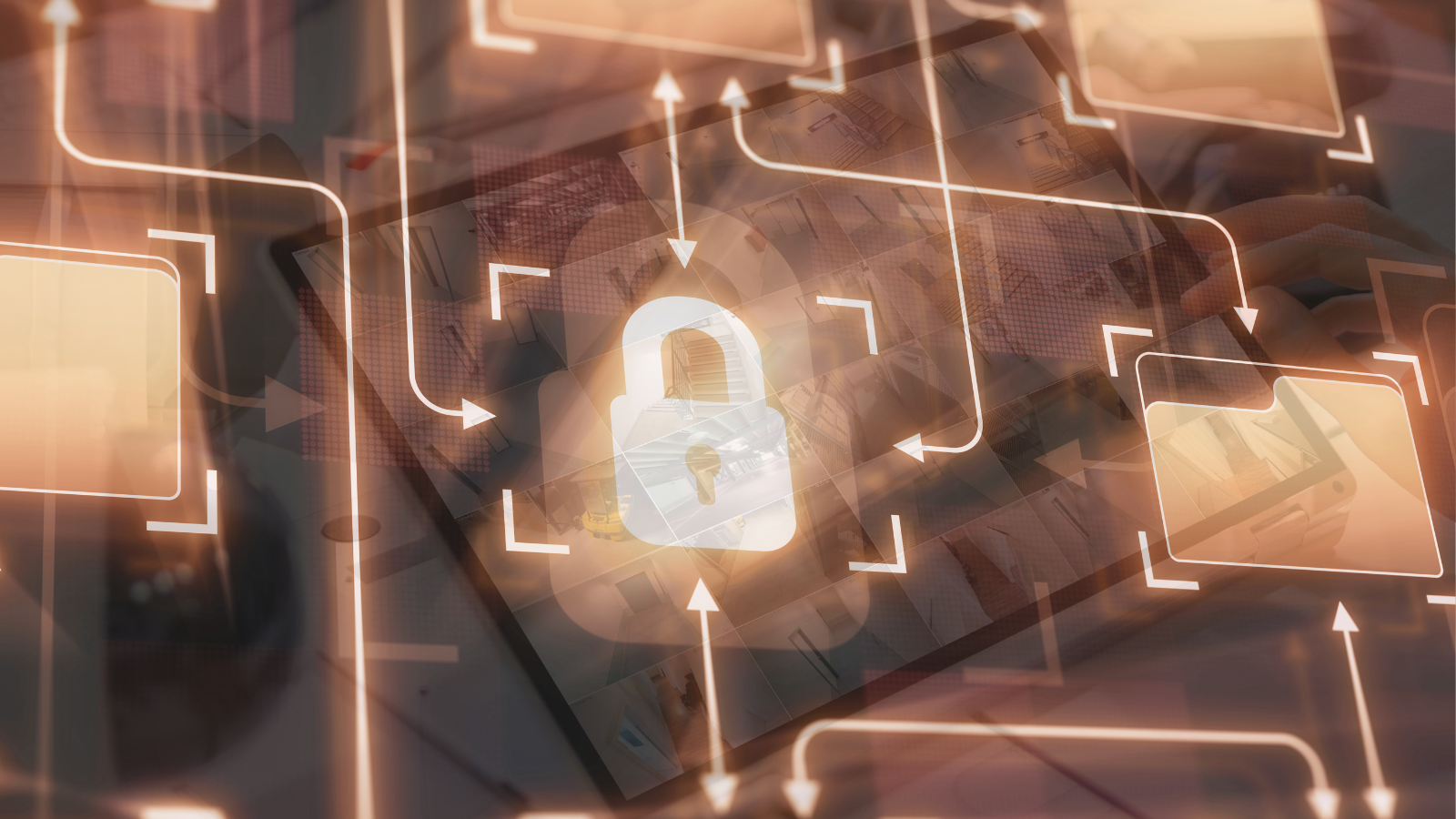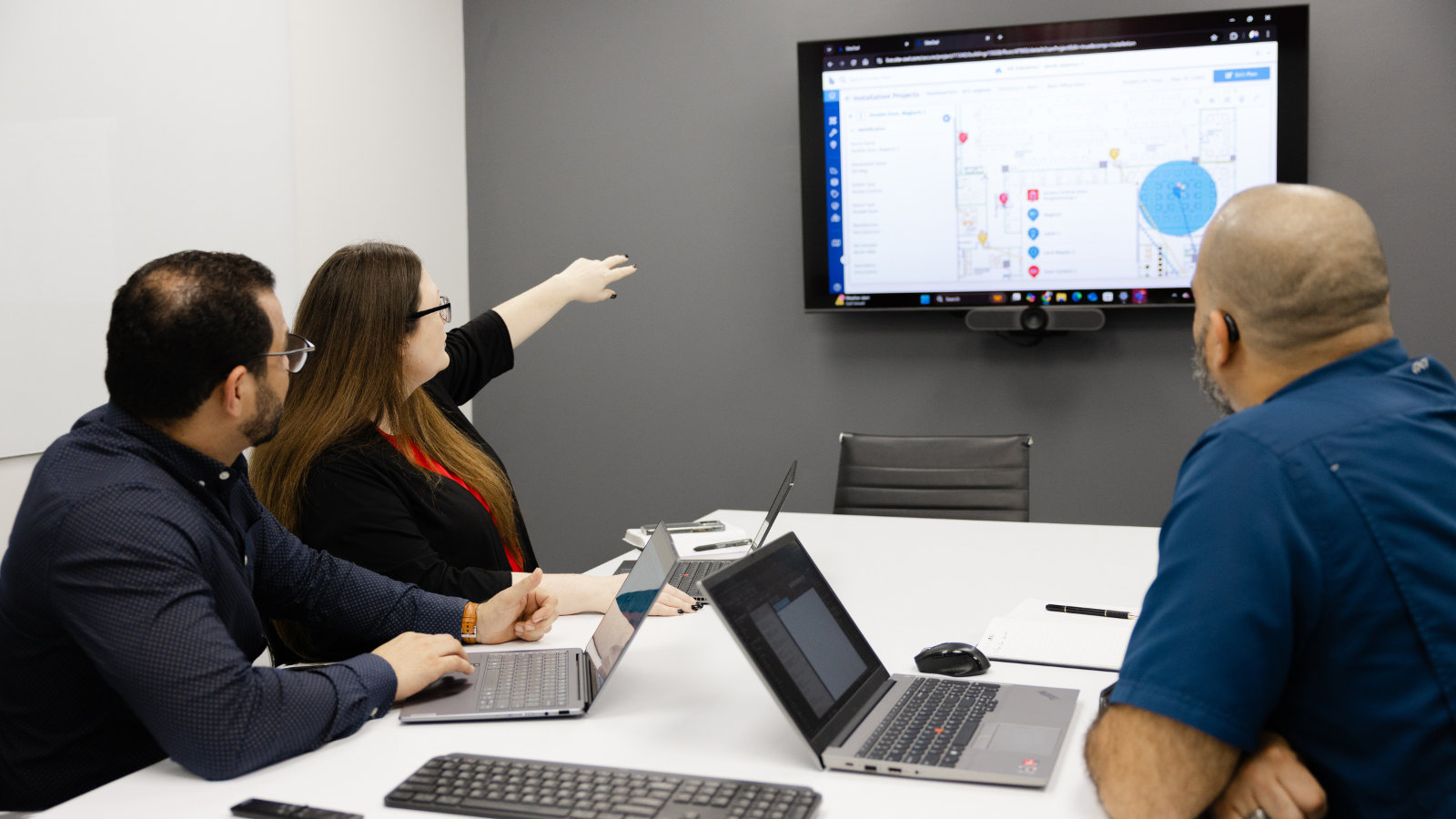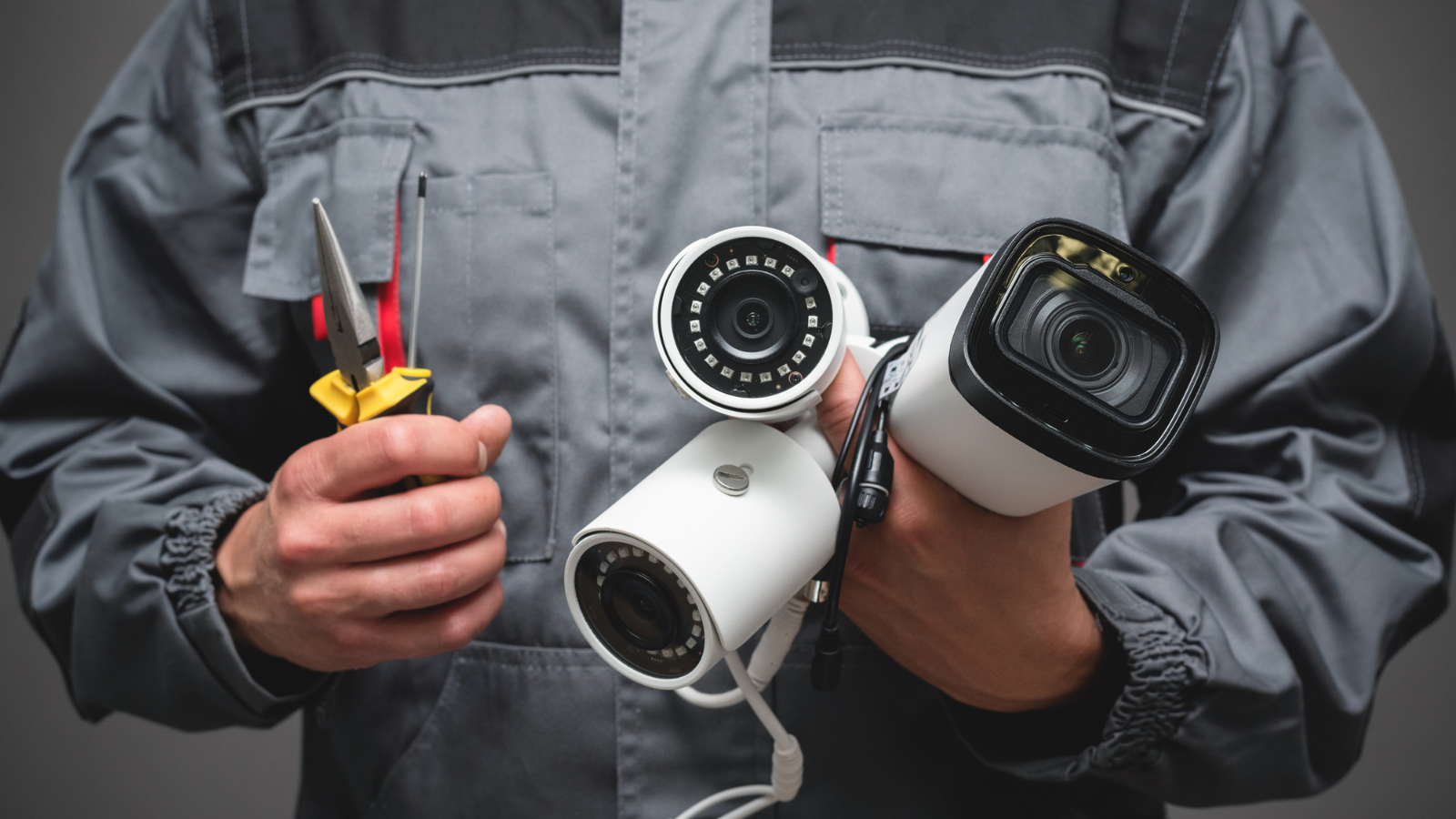The physical security industry is at a crossroads, and integrators relying solely on project-based revenue are feeling the strain.
Economic uncertainty and technological disruptions have impacted 60 percent of integrators, forcing delays in growth, wage cuts, and funding challenges. Combine that with shrinking hardware margins, rising customer expectations, and rapid technological shifts, and it is clear the old business model no longer works.
Sticking to traditional approaches not only squeezes profits but also risks losing customers who expect flexibility, value, and long-term support from their security partners.
Here’s why project-based revenue is no longer sustainable and what integrators can do to thrive in a changing landscape.
1. Feast or famine cycles
If you’re a physical security integrator relying on project-based revenue, you’re likely familiar with the rollercoaster of feast-or-famine cycles.
One month, your team is booked solid, juggling multiple installations with tight deadlines. The next? You’re staring at an empty pipeline, scrambling to fill the gaps.
The unpredictable nature of project work makes growth planning difficult. Large projects may keep your team busy for months, but the lulls that follow strain resources and turn decisions like hiring, training, or investing in tools into high-risk gambles.
Hidden Costs of Project Work
Studies show that project-based businesses can experience revenue swings of 20-30% from month to month, creating financial instability and making budgeting a constant struggle. On top of this come the challenges of:
- Project delays: Only 34% of projects are completed on time and within budget, which negatively impacts profitability and customer satisfaction.
- Long sales cycles: Security integration projects often have sales cycles ranging from 3 to 12 months (or even longer for complex systems), exacerbating revenue unpredictability.
- Labor costs: Skilled labor accounts for 30-40% of total project costs, making it a major financial burden during lean periods when staff isn’t fully utilized.
How recurring monthly revenue (RMR) provides stability
Transitioning to a recurring revenue model is one of the most effective ways to smooth out feast-or-famine cycles. By offering service contracts, managed services, or subscription-based maintenance plans, integrators can secure a steady stream of income that cushions their business during slower months.
- Predictable cash flow: Recurring revenue stabilizes finances, making it easier to budget, invest, and scale your operations.
- Increased customer loyalty: Service contracts keep you engaged with clients long after installation, fostering stronger relationships and future opportunities.
- Reduced reliance on projects: With steady income from subscriptions, you can minimize the pressure of constantly chasing the next big project.
Moving to a recurring revenue model can help smooth out these cycles, providing stability and predictability. However, recurring revenue alone isn’t a silver bullet, integrators must also navigate ongoing market turbulence and the challenge of shrinking hardware margins.
Learn More: 5 Reasons Why Integrators Struggle with Recurring Revenue Generation
2. Market turbulence and shrinking margins
The security industry has always faced challenges, but recent economic turbulence has intensified the strain on integrators. According to the Security Business State of the Security Industry report, 60% of integrators have been significantly impacted by rising interest rates and inflation.
These pressures have led to difficulties securing loans, delays in business sales, and cuts to wages, raises, and benefits to stay afloat. Adding to the strain, 34% of integrators reported that 75-99% of their vendors increased prices, forcing them to absorb higher costs or pass them on to customers, both of which threaten competitiveness.
Recurring revenue models offer integrators a way to counteract these financial pressures and build resilience against external market forces. Shifting focus from one-time hardware sales to service-driven offerings can provide financial stability and long-term growth.
- Focus on value over hardware: Service contracts and managed services allow integrators to package their expertise as a core offering, reducing dependence on low-margin hardware sales.
- Lock in predictable revenue: Recurring revenue provides financial stability, even during times of economic uncertainty or rising costs.
- Strengthen customer loyalty: With service-based agreements, integrators become long-term partners to their customers, reducing price sensitivity and fostering retention.
As market challenges persist, service-driven revenue streams offer a path to stability. However, thriving in this landscape also requires meeting the evolving expectations of today’s customers.
3. Changing customer expectations
The era of customers simply wanting to “own” their security technology is coming to an end. Modern businesses are no longer focused on ownership; instead, they want security systems that empower them by delivering ongoing value, adapting to their needs, and staying ahead of emerging threats.
Today’s customers expect more than a one-time installation. They demand solutions that provide:
- Flexibility: Solutions that can scale and evolve with their business as their needs change.
- Simplicity: Easy-to-manage systems that reduce complexity and eliminate the hassle of ownership.
- Proactive support: A partner who ensures their system is always optimized and ready for tomorrow’s challenges, not just today’s.
- Cost predictability: Subscription models that spread costs over time and protect against unexpected expenses.
For integrators, these evolving customer expectations bring both challenges and opportunities. A project-first mindset risks alienating clients who now seek comprehensive, future-ready solutions.
Modern customers increasingly value security systems not only for their safety functions but also for their ability to deliver broader business benefits. For example, they expect security platforms to provide data-driven insights, operational efficiency, and integration across IT and OT systems.
Additionally, clients are increasingly drawn to subscription-based models like SaaS and managed services, which offer flexibility, scalability, and predictable costs. The subscription economy has grown by 435% over the last decade and is expected to reach a market size of $1.5 trillion by 2025.
To meet these demands, integrators must move beyond the traditional “break-fix” model, where support is only provided when issues arise. Instead, they need to adopt a proactive approach that leverages the latest technological advancements to deliver ongoing value.
4. Technological advancements
The pace of innovation in physical security is accelerating rapidly. AI-powered surveillance, cloud-based platforms, and IoT integration are transforming security systems into intelligent, interconnected solutions far beyond traditional hardware.
Industry data highlights this shift: 71% of security decision-makers plan to adopt cloud-based technology within three years. While these advancements create exciting opportunities, they also introduce new challenges for integrators.
Modern security technology is no longer just about cameras and access control. Businesses are now looking for tools that harness data, optimize operations, and deliver long-term value. Key advancements shaping the industry include:
AI and Video Analytics
Artificial intelligence is making surveillance proactive rather than reactive. Capabilities like facial recognition, object tracking, and predictive threat detection help businesses identify risks in real time, but they also demand scalable storage and strong cybersecurity measures.
Cloud Adoption
Cloud-based solutions are becoming the standard for physical security, offering scalability, flexibility, and remote management. According to Genetec’s State of Physical Security report, 44% of end users now use cloud or hybrid-cloud systems, nearly double the rate from 2022.
IoT Integration
Security systems are increasingly connected to the IoT ecosystem, integrating with sensors, building management systems, and supply chain tools. The number of IoT-connected devices is projected to exceed 29 billion by 2030, driving demand for integrated, secure systems.
Lifecycle Management
As security systems grow more advanced, lifecycle management is key to maintaining long-term value and performance. 60% of organizations report that regular lifecycle management reduces total cost of ownership by improving efficiency and reducing downtime. By providing lifecycle management insights, integrators can offer proactive services such as scheduled updates, end-of-life planning, and system optimization.
Investing in these technological advancements and lifecycle management strategies enables integrators to position themselves as trusted advisors who provide long-term value and strategic guidance to their customers.
5. From Vendor to Trusted Advisor
The role of physical security integrators has evolved. It’s no longer enough to simply sell hardware and complete installations. Customers today are looking for long-term partnerships with experts who can help them navigate the complexities of modern security technology and ensure their systems remain effective, scalable, and future-ready.
To stay relevant in an increasingly competitive market, integrators must position themselves as trusted advisors rather than transactional vendors. A trusted advisor delivers ongoing insights, tailored solutions, and strategic guidance that go beyond the initial installation.
- Understanding customer needs: Trusted advisors take the time to assess each client’s unique challenges and goals, designing solutions that align with their long-term needs.
- Providing strategic guidance: By staying informed on emerging technologies like AI, IoT, and cloud-based systems, advisors help customers navigate innovation and future-proof their systems.
- Fostering ongoing relationships: Advisors remain engaged after installation, providing proactive support, training, and regular check-ins to ensure systems are optimized and evolving with the customer’s business.
Integrators who embrace this role can escape the race to the bottom on pricing and instead focus on delivering value that customers are willing to invest in.
Adapting and thriving with SiteOwl
The physical security industry is undergoing significant change, and integrators who rely solely on project-based revenue are encountering increasing obstacles. Feast-or-famine cycles, shrinking margins, rising customer expectations, and rapid technological advancements are reshaping the market, making traditional models unsustainable.
To succeed, integrators must transition from transactional vendors to strategic advisors. Embracing recurring revenue, advanced technology, and proactive lifecycle management is essential for delivering lasting value and fostering strong customer relationships.
By focusing on service-driven solutions and building trusted partnerships, integrators can meet modern demands while creating resilient, growth-focused businesses. SiteOwl provides the tools to simplify service delivery, enhance lifecycle management, and empower integrators to lead in an increasingly competitive industry.
Discover the difference. Request a demo today and see how SiteOwl can help you thrive!

Su Subburaj
Su is SiteOwl's CMO and leads all marketing and communications. Su has extensive strategy and management consulting experience and previously consulted for 3Sixty Integrated where she gained an in-depth understanding of digital transformation challenges in the physical security industry. When not working on strategies to expand SiteOwl's footprint, Su enjoys bad karaoke, weightlifting and traveling.




